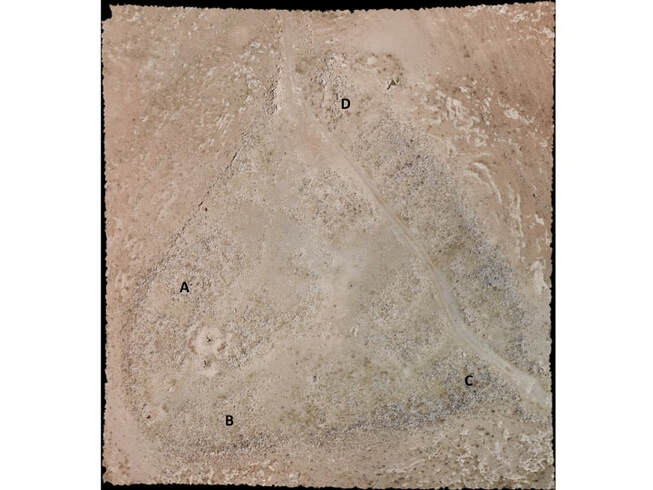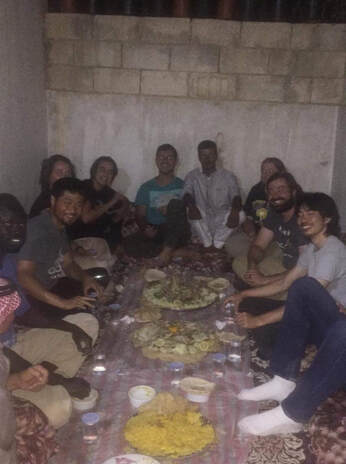|
For some, the summer means school is out for students. Growing up in Florida, it meant going to the beach daily, barbecues, bon-fires and fishing. When one is in the academic discipline of archaeology, summer means: “dig season.” It is true that there are other excavations, which operate outside of the months of May – July, but in the Middle East, summer is the most convenient for students. Field schools are in full swing and archaeological projects either begin and/or pick right up where they left off last year. In this case, Khirbet Safra kicked off its second season in Jordan for 6 weeks (end of May to mid-July). Andrews University has been involved with excavating major sites in Jordan since 1968 led by the renowned archaeologist Sigfried H. Horn. In fact, Tall Hesban Excavations just celebrated its 50th year anniversary of continuous work as apart of the Madaba Plains Project. Two additional excavations at Tall El-Umayri (1984) and Tall Jalul (1992) have also been excavated by Andrews. :::Warning::: Technical, but not too technical, archaeology jargon coming henceforth. All pictures I use in this post are my own (unless specified) and are, by no means, publishable quality. I do this intentionally to protect the integrity of the publication materials** Arial of Khirbet Safra showing the four fields A-D before excavation. Remnants of the wall are visible as are several caves. A modern day, dirt road is also visible and shows, logically, the way one would find accesses into the ancient city. (Picture courtesy: Andrews University)To answer more questions regarding the Iron Age in Transjordan (the ancient, politically correct term for the land in modern-day, Jordan) excavators moved their focus southwest to Khirbet Safra. Some sites in archaeology are called Tells/Talls or Khirbets. A Tell is a mound created over time with layers of ruins and occupations beginning with the most recent occupation on the top and the earliest material culture at the lowest levels. (For a more thorough description of Tell structures check out my previous blog post here.) A khirbet is the designation for a site in which ruins or architecture are exposed prior to any excavation or disturbance to the site. From aerial photographs the khirbet has a clear outer-wall surrounding the circumference of the city, along with an inner wall forming the interior of what is known as a “casemate” – a double reinforced wall structure commonly seen in the Levant. Example of Casemate wall structure at Tel Hazor, Israel. (wikicommons)Initial survey of the site found several different time periods of pottery on the surface ranging from Iron II (10th-6th century BC) to the Byzantine periods (AD 3rd-6th century). Four fields were opened on the four areas of the khirbet -- A, B, C, and D. These fields were strategically placed in order to 1) delineate the casemate (in all fields); 2) expose any remaining gate structure(s) in the north and east of the city (fields C and D); and 3) expose any large, assumed administrative structures in logical locations (Fields A and B). The first season (2018) yielded fine results of pottery and helped establish a better chronology of the site. Two squares were opened in each Field and majority of the squares were finished and closed by the end of the season on account of bedrock laying a meter to a meter and a half under the surface. In most areas, upon the exposed bedrock was a sealed locus of Iron I pottery dating to the 13th Century BC, which was earlier than what the excavators expected since Iron II pottery sherds were collected in the initial 2017 ground survey. The second season, in 2019 was focused primarily on Fields B and D respectively. Field B opened four new squares where a monumental building was discovered abutting the casemate wall to the south. Field D also opened four more squares and discovered several rooms connected to a 13th century gate complex to the city, complete with a threshold stone and stone benches. The gate finding is significant for several reasons since it is a high traffic area for entrancing and exiting the city. Many administrative and legislative processes occur at city gates. For ancient and biblical Parallels, look at texts dealing with events where the elders meet at the city gates to make judgements and form contracts. (Gen 19:1; Deut 25:7; Ruth 4:1, 11; 2 Sam 23:15; 2 Kngs 7:1, 7:17; Prov 31:23; etc). Benches on either side of gate entrance. Fellow archaeologist, Jacob Moody and I are reenacting how elders would discuss legal matters at city gates.Picture of the Gate in Field D looking North. I'm standing in the threshold for scale.A better picture of phasing is appearing and it tells us that the first settlers to Khirbet Safra built a walled town/city upon bedrock, filling in holes and depressions in the bedrock with a red-bricky material in order to make it flat. The site was most likely destroyed at one time as there is a thin ash layer in Fields A and B, most likely caused by an earthquake on account of tectonic/seismic activity frequent along the Jordan River Valley which is a known fault line. There may be evidence of destruction based on the emerging Moabite presence in surrounding ancient towns and cities. Some settlers during the Byzantine period reused the abandoned/destroyed walls in Fields A and B but only had a short period of occupation. Top down view of Field D gate complex facing Southeast. You can see where the holes in the bedrock were filled with a red-bricky material. In the top right corner of the picture is the balk line and surface. Bedrock and Iron Age I surface was barely a meter below topsoil in some areas.For copyright and publication reasons, I will leave any more details about the findings of Khirbet Safra for now. It is a fascinating site which will help answer questions we may have concerning the Transjordan in the Iron Age I. For those interested in Biblical Chronology and archaeology, this is most likely the time period of Joshua and Judges. If geographic information and boundaries in the Bible are accurate then the city of Khirbet Safra lies within ancient Reubenite territory. Next Season we hope to reopen all 4 fields and continue with excavation. Although some questions were answered, more questions are raised. We have yet to find any inscriptional evidence or material culture which shows what kind of people lived at Khirbet Safra, whether they were Moabite, Ammonite or -- dare we say, Israelite? Only time will tell as we press onwards and downwards. Consider joining us next year as we dig into history and uncover the secrets of Khirbet Safra. Khirbet Safra 2018 Dig TeamMembers of the 2019 Dig Team. Forgive me for the poor picture quality until I can find a better dig photo for the 2019 team.I realize a lot of this text can appear as technical, archaeology “mombo-jumbo.” However, these are valuable results that we uncover which help us understand the world that came before us and ultimately tell us something about ourselves. Archaeology is about discovering our intellectual heritage. It is not all working in the hot sun every day. You can see my video in what a typical day in the life of an archaeologist looks like here. When we are not working, we tour exotic sites, eat wonderful Jordanian cuisine and more importantly, form relationships with people who are not much more different that ourselves. Archaeology is an opportunity for building a bond between people of different cultures. It brings together people from all walks of life based on age, ethnicity, language, religion and politics. We coexist and work towards a better understanding of humanity. See my video of our wonderful volunteers and students from last year here. Come join in on the adventure with us next year. You will not regret it.
-Tal
0 Comments
Leave a Reply. |
Archives
June 2021
Categories
All
|








 RSS Feed
RSS Feed